

Since the previous report we have had two meetings at Llangollen - one just before Christmas on Friday 23 December and our traditional "cold turkey" (turkey not included) meeting on Wednesday 28 December. A brief summary of the work that was carried out can be found in the Unit-specific work section below.
It looks as though Secret Santa resulted in a jigsaw puzzle for one person...
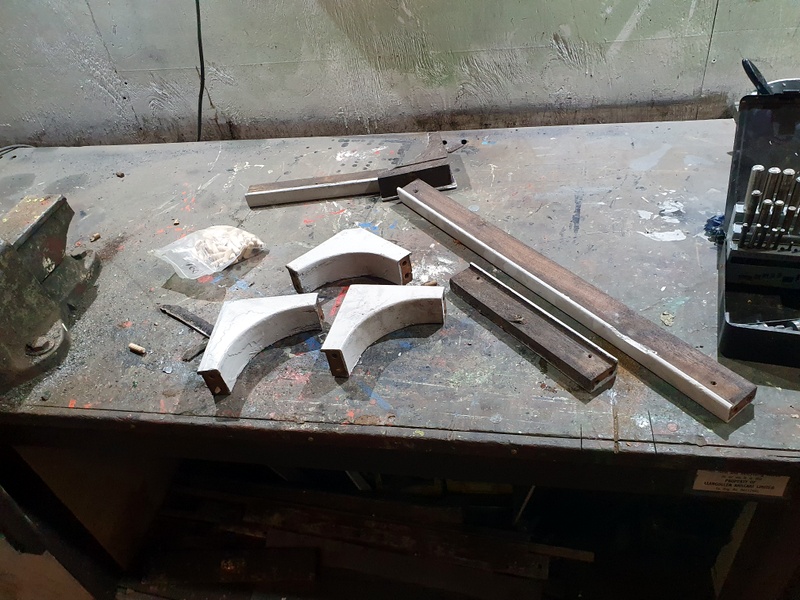
...and a heavyweight, non-travel variety of the game 'Pick Up Sticks' for someone else...
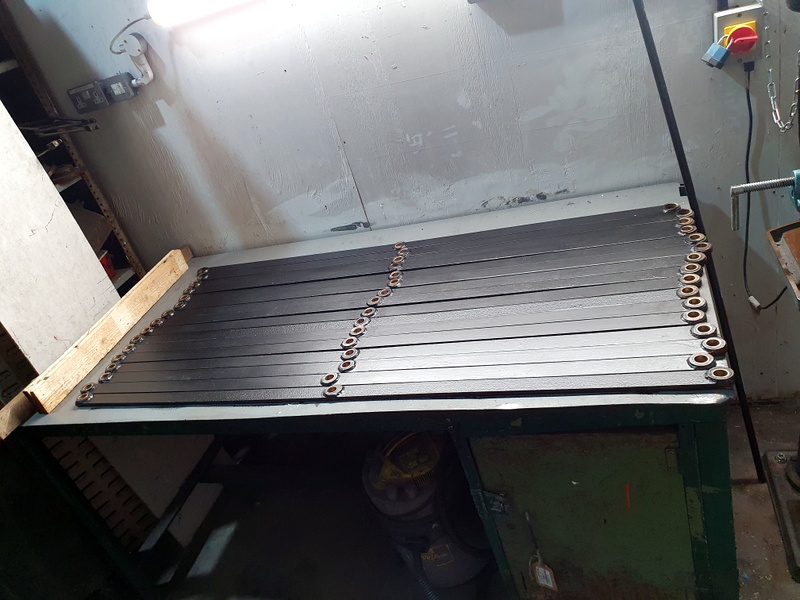
Seriously they are respectively the components of a window frame from the guard's compartment of the class 127 and the folding bars for the corridor connections of the Cravens (class 105) trailer 56456 at Llangollen and the Gloucester (class 100) trailer 56097 at Butterley. The bars were painted and the components of the window frame, which was removed to facilitate the welding of some replacement body skin, had to be repaired by removing the broken dowels that hold it together, drilling out the holes, fitting new dowels, giving it a good sanding and loosely reassembling it in readiness for fitting.
Some much larger presents, in the shape of corridor canvases that were ordered several months ago, were unexpectedly delivered to the loco shed just before Christmas so the class 108 was sent to collect them...
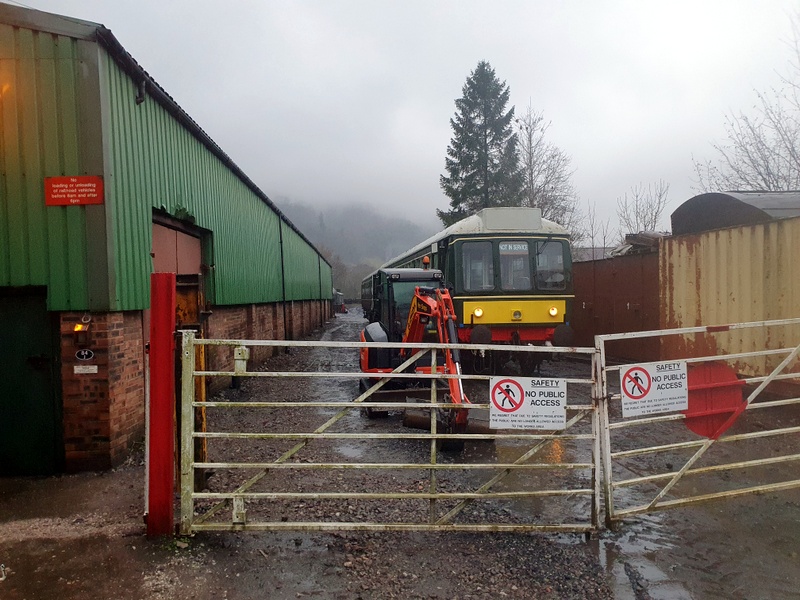
That may well have been the first time that the unit ventured on to that piece of track since it was delivered by road from the Swanage Railway in 2019. And as a complete coincidence it was also able to do some parallel running with the Santa Special service train for a brief period on its way back to Pentrefelin.
As reported in 'General' above the folding bars for the corridor connection were painted together with those for the Gloucester trailer car at Butterley.
The corridor faceplate assembly was dismantled to remove the old canvas...
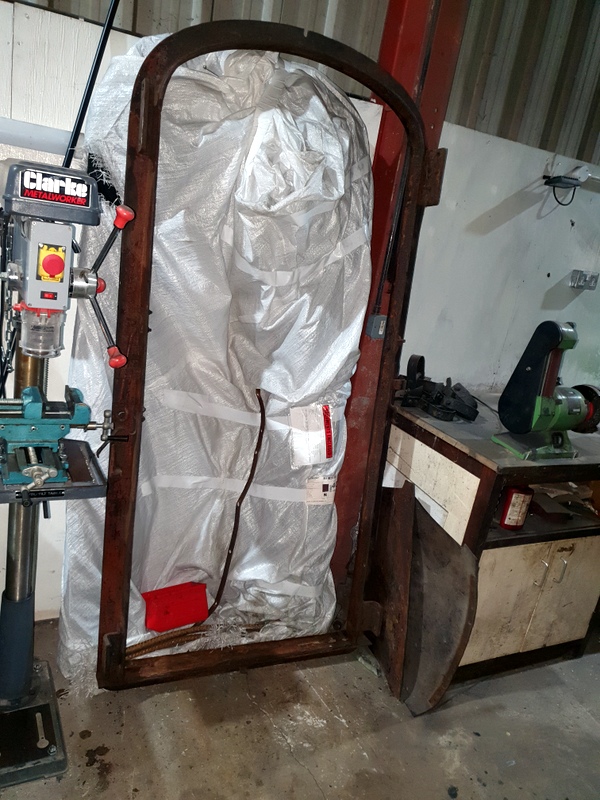
The tread plate was found to be corroded but the woodwork turned out to be salvageable so it was given a sanding and a coat of primer. The faceplate itself will be properly cleaned and painted at a later date.
Work continued with the reassembly of the brakegear on the no. 2 bogie of the trailer car (56171) following the removal, overhaul and replacement of the vacuum brake cylinder. Despite some trials and tribulations it is now almost complete so it is hoped that we will be in a position to connect a vacuum 'supply' to find out if it works properly at our next meeting.
Brake blocks waiting to be installed...
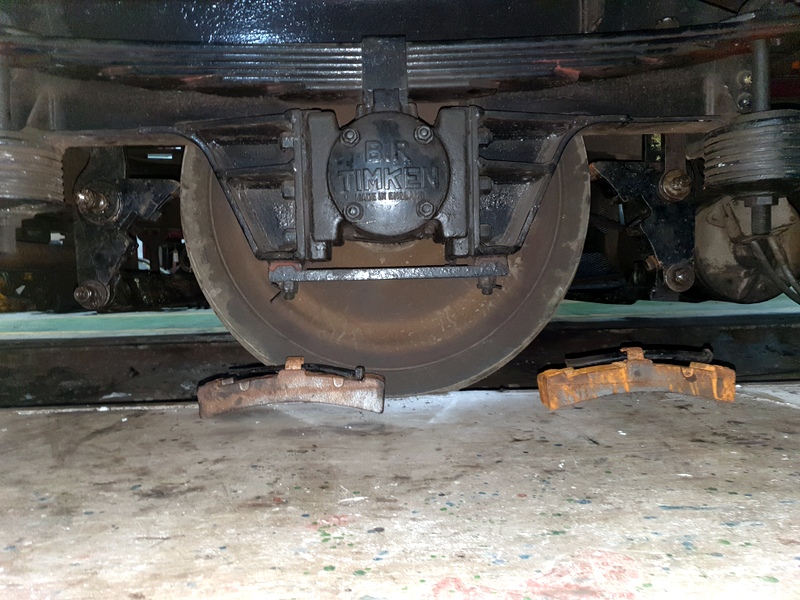
Brake blocks installed...
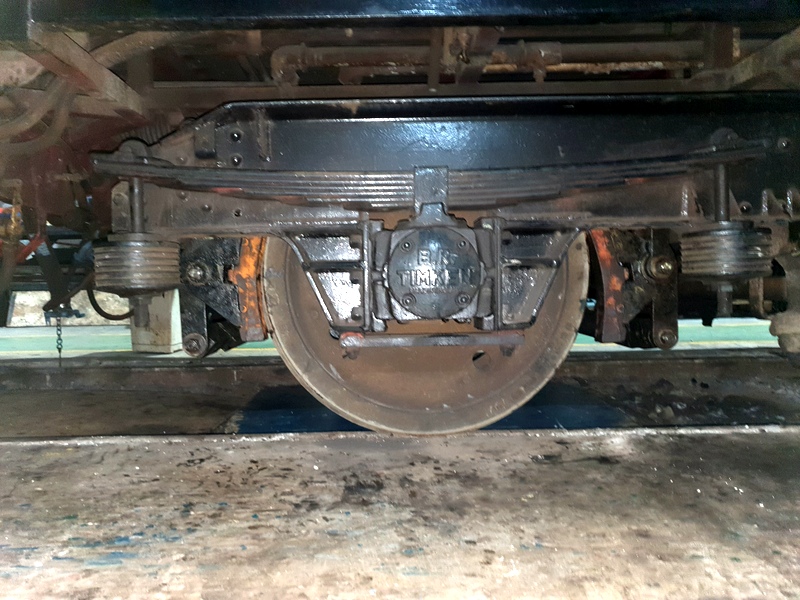
A couple of areas of rotten skin were removed from the luggage door of the guard's compartment on the secondman's side of the vehicle and replacement patches produced and welded. The locking bars and handle were also dealt with...

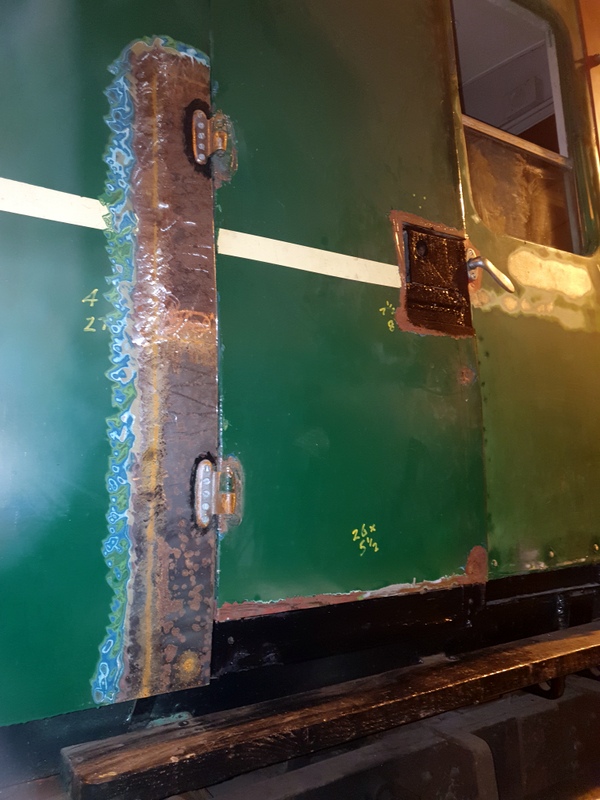
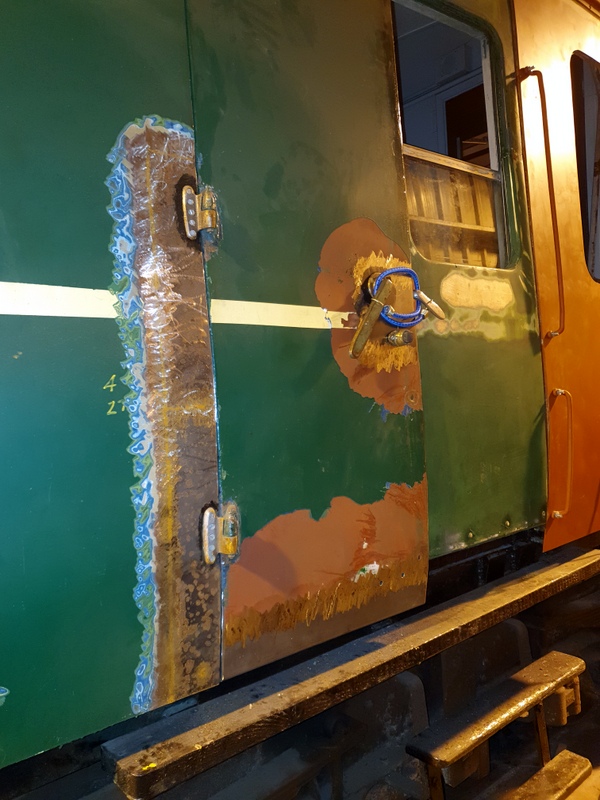
A comment that this would be the last welding on 51618 was greeted with some scepticism :-) There is, nevertheless, some woodwork arising to attend to. One such item is the fitting of the window frame that was mentioned in 'General' above. This is what the completed puzzle looked like...
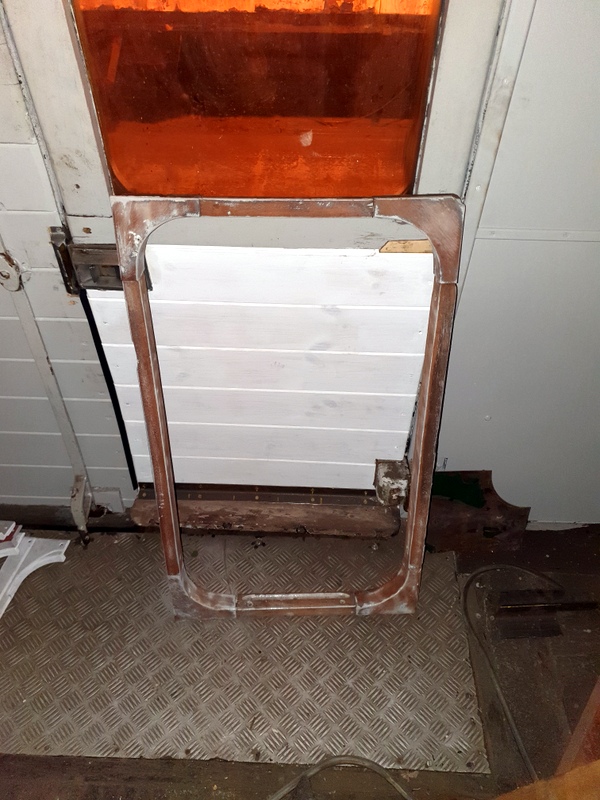
As reported in the 'General' section above the folding bars for the corridor connection were painted at Llangollen together with those for the Cravens trailer vehicle.
Thanks to John Joyce for supplying the pictures.
Finally we would like to wish our readers a Happy New Year!
A summary of the work that has been carried out at our Llangollen and Butterley bases since the previous report can be found in the Unit-specific work section below.
'Oilite' bushes were fitted to the corridor folding bars for this vehicle and also to the ones destined for the Gloucester class 100 unit that is undergoing restoration at the Midland Railway, Butterley.
The vacuum brake cylinder that had been removed from the no. 2 bogie of the trailer car (56171) was stripped down, cleaned, reassembled with new components, given a thorough test in the workshop and then given a fresh coat of paint before being refitted to the vehicle.
The following picture shows the piston, which has a diameter of 18in (approximately 46cm), and its piston rod...

Vacuum brake pistons need to be large because the relatively small pressure difference of approximately 10 pounds per square inch (psi) between atmospheric pressure and the working vacuum that is created (21" Hg) has to be applied to lots of square inches in order to generate the required pounds (brake) force. Air brakes, on the other hand, use compressed air to create a positive pressure of > 70 psi so they are able to produce the same force with much smaller cylinders/pistons. That is one of several reasons why the vacuum brake was superseded by the air brake as the standard type of brake on British Rail(ways).
One of the components that was replaced was the worn piston rod bush shown on the right of the following picture with its shiny new counterpart on the left...
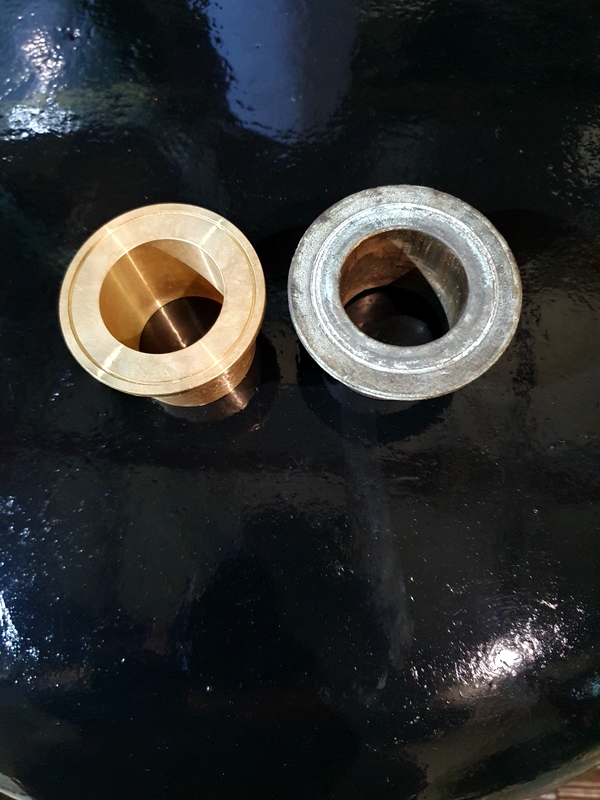
The inner cylinder was lowered back into the outer one...
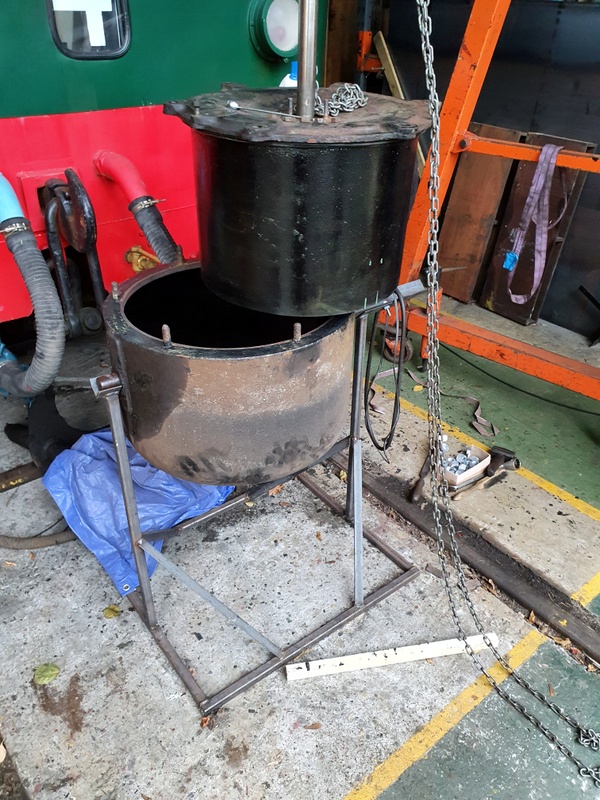
...and then the outer was given a coat of paint...
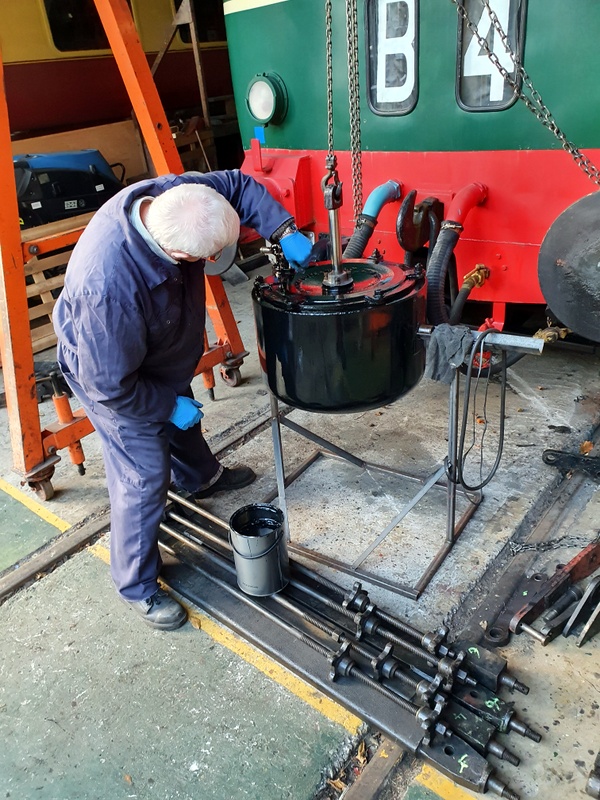
The specially-modified trolley jack was deployed to wheel it under the vehicle and lift it into position with the aid of a calibrated boot for some fine-tuning...
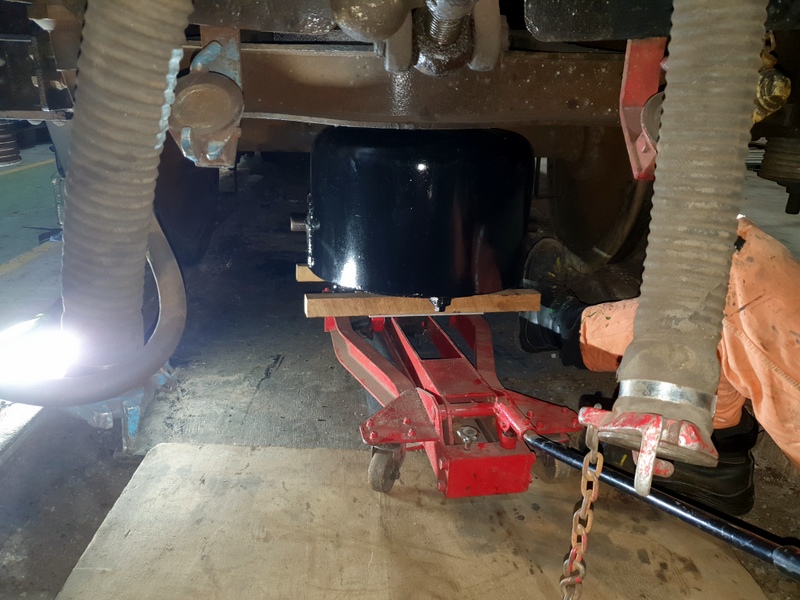
A start was made on fitting some of the other items of brakegear that had been removed, cleaned and painted...
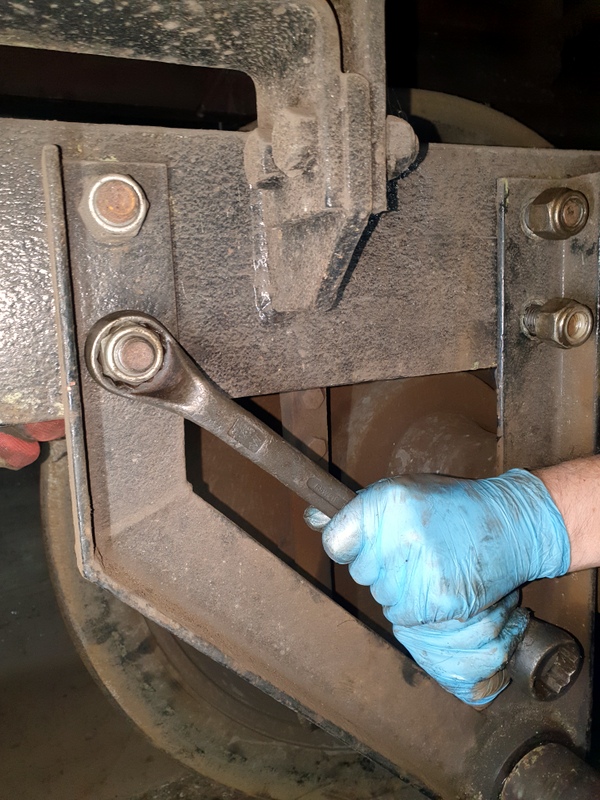
It had been noticed that some of the brake blocks had been trying, and in some cases succeeding, to explore parts of the wheel that should be out of bounds to them so, in an attempt to prevent that from happening again, the brake block carriers were modified to properly constrain the blocks by first of all being built up with weld and then filed to the correct shape...
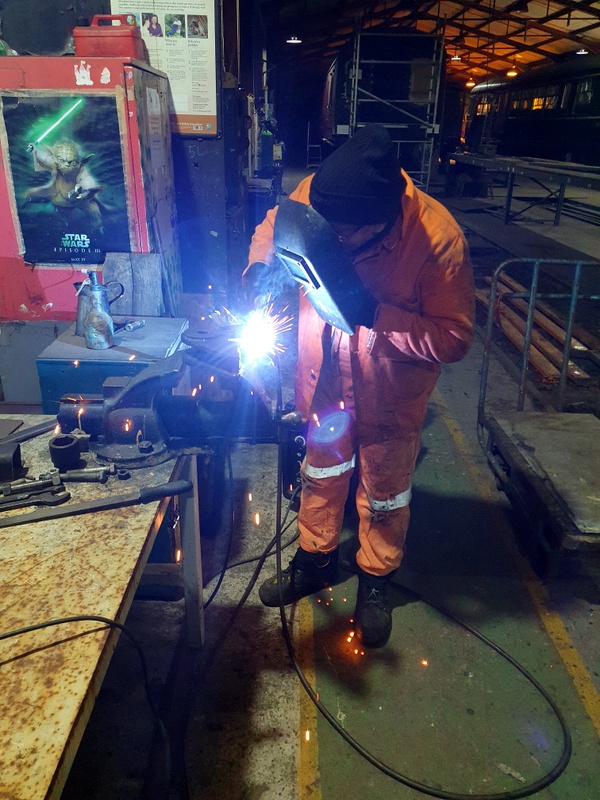
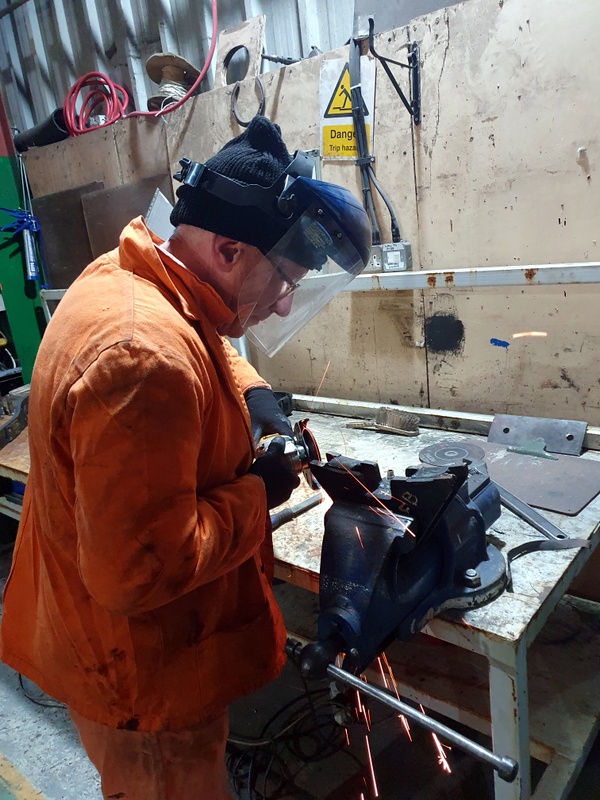
The secondman's door lock on 50416 was removed, cleaned, regreased and refitted because it had been noted as occasionally not remaining in the 'propped' position.
The insides of some of the new steel bodyside panels were given a coat of chassis black in order to protect them against moisture when they are covered up by the panelling etc. Chassis black is difficult to apply in very cold conditions due to its propensity to be solid rather than liquid. The following pictures show some before(ish) and after views...
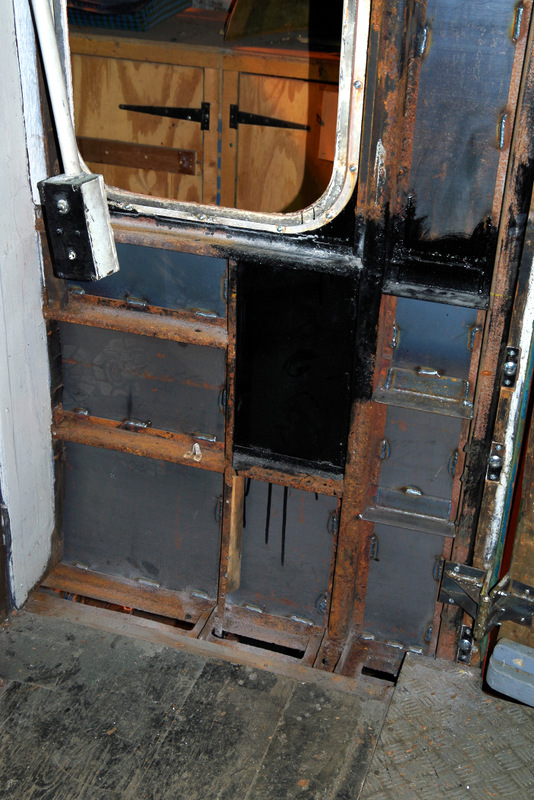
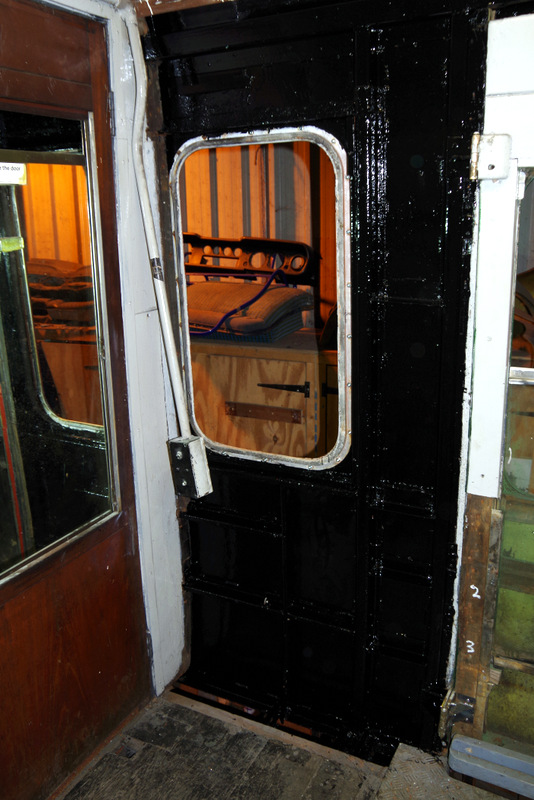
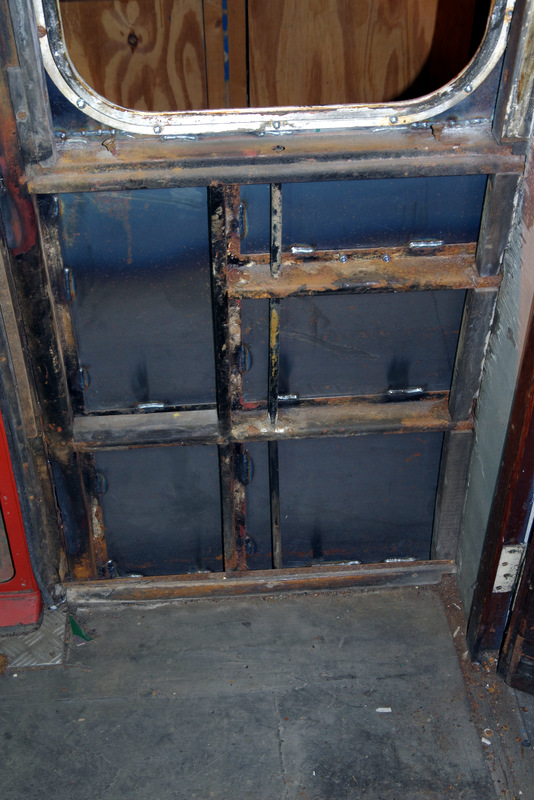

Gloucester class 100 51118/56097 (undergoing restoration at the Midland Railway, Butterley)
Four of the five floorboards in the middle compartment were lifted, with three of them having the addition of the 3.5mm plywood fitted to them before they were fastened back down*. Also a lot of measurements were taken to ensure that the brackets on the seats will line up with the corresponding securing points on the floor and walls.
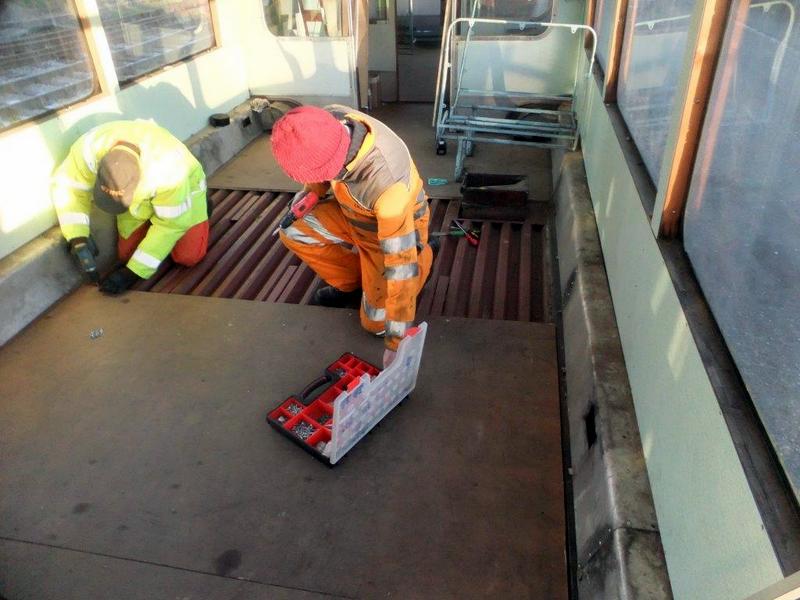
* Given that the phrase "Raising the roof" means "To complain loudly and angrily" I wondered if there is a corresponding alternative meaning for "Raising the floor".
A Google search came up with the following that has been subjected to a little artistic licence to make it more meaningful:-
"Raising the floor prevents regression. This is a core part of enjoying life and staying healthy mentally and physically. The higher your floor, the safer you are against life's many challenges.".
Hmmm - do you think the extra 3.5mm will be enough lads? :-)
Thanks to Allen Chatwood, John Joyce and Mike Martin for supplying the pictures.
With this year's running season behind us we can now concentrate on the winter maintenance programme as well as some of the longer-term restorations and repairs before our next running season starts in February.
There are no prizes for spotting that the pictures on this page are mostly associated with jobs at the cleaner end of the spectrum. I shamelessly admit that, while wallowing in the dark and dirty confines of a bogie underneath the class 104, wielding a grease gun, looking for the grease nipples on a cardan shaft, and being instructed by "the boss" to try to complete the job before dark (a reference to darkness in the outside world) I decided that it might not be a good idea to try to extract my phone from my pocket and take a selfie or even a picture of my colleague who was similarly embroiled. Had there been a passing photographer with a floodlight that might have been a different matter! :-)
As usual, one of the first post-running jobs was the 'winterising' of the fleet which involves checking the concentration of anti-freeze in the engine radiators, increasing it if required, and the draining of the header tanks that supply water to the toilets and washbasins in order to minimise the risk of frost damage. This year a total of sixteen litres of anti-freeze was required to increase the concentration in five of the radiators. Some of our engines require occasional top-ups during the running season and whenever that is done with plain water, as is usually the case, it results in the anti-freeze being further diluted.
On the maintenance front we made a start on the 'C' exam on the class 104. As the second biggest exam that we do, the 'C' exam takes place on each vehicle every six years and, in the case of a power car, it comprises more than seventy jobs. The class 104 has two power cars but one of them (50528) was out of action for most of the year awaiting bodywork repairs so, to begin with, we are concentrating our efforts on the other one (50454). Further information can be found in the 'Unit-specific work' section below.
The fitting of the internal 'fixtures and fittings' in the Cravens and Gloucester trailer cars, at Llangollen and Butterley respectively, has now reached the stage at which the teams can see what the finished product will look like and, in some cases, that has led them to realise that some of the enabling work that has already been carried out would benefit from being done in a slightly different way. Needless to say the need to revisit jobs is not good for morale but it is, nevertheless, an indication of the desire to produce some top class products! Further information can be found in the 'Unit-specific work' section below.
Finally, as evidence that there are some jobs that don't involve getting dirty at all, our electrician was excused from DMU maintenance duties after assuring "the management" that a year had gone by since he carried out the Portable Appliance Tests (PAT) on our electrical devices so he'd just have to do them all again... :-)
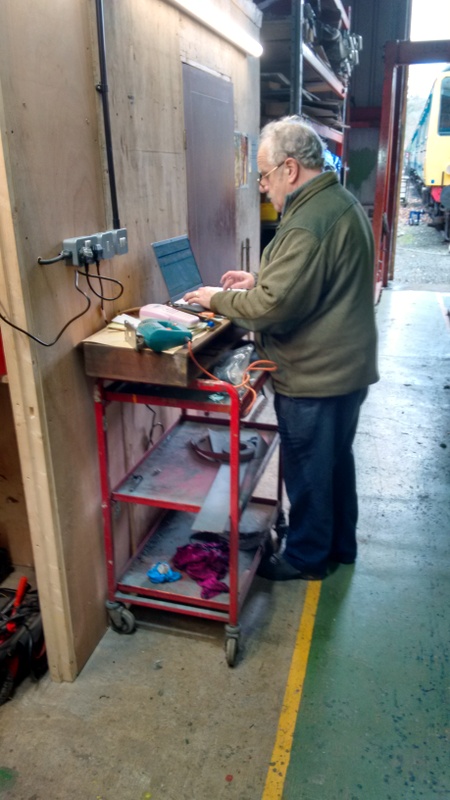
As mentioned above we made a start on the 'C' exam on 50454 by tackling, and completing, the dirtiest jobs including oil and filter changes, the examination and greasing of transmission components, and the greasing of the drives to the radiator fans. Although most of those jobs involved crawling about under the vehicle we were briefly allowed out to clean the centrifugal oil filters...
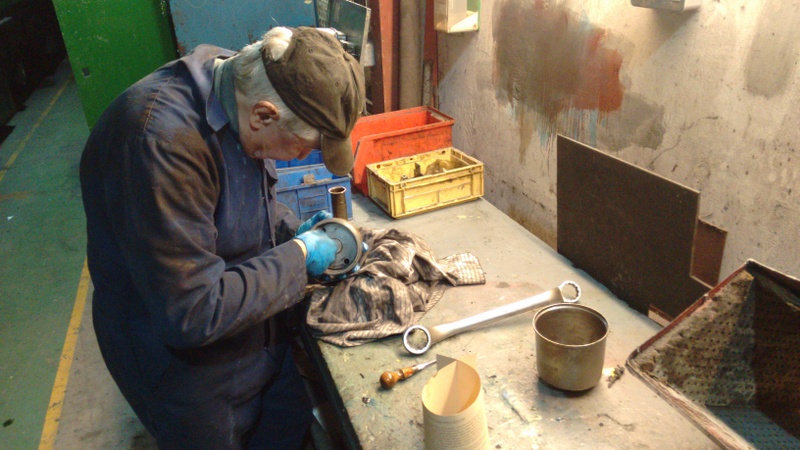
...and to add the new engine oil...
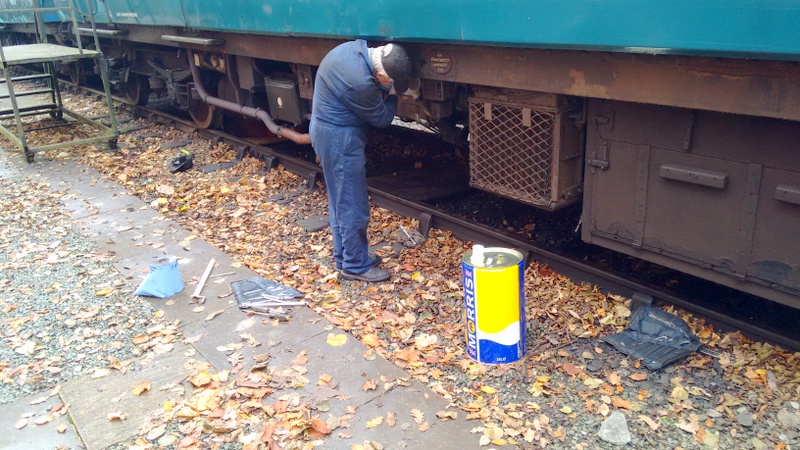
The brackets for the new step boards were cleaned up and given a coat of red paint to protect them...
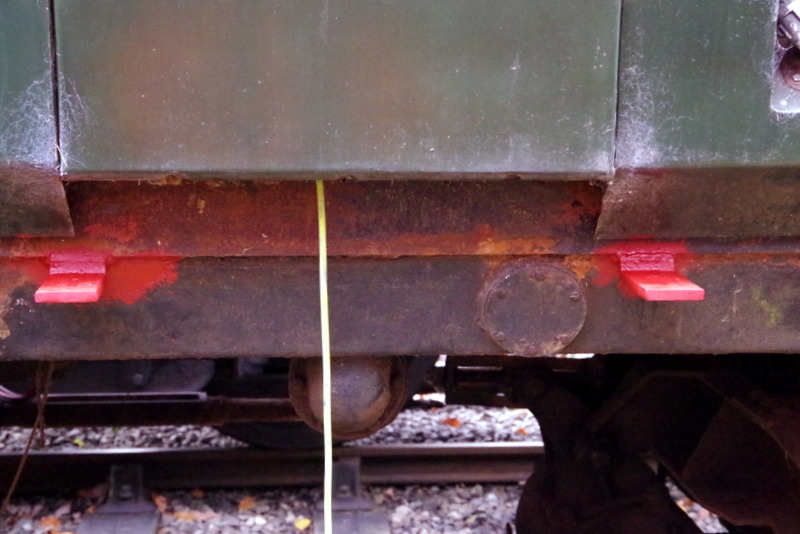
The following picture shows a test fitting of a step board that had been created as a homework project...
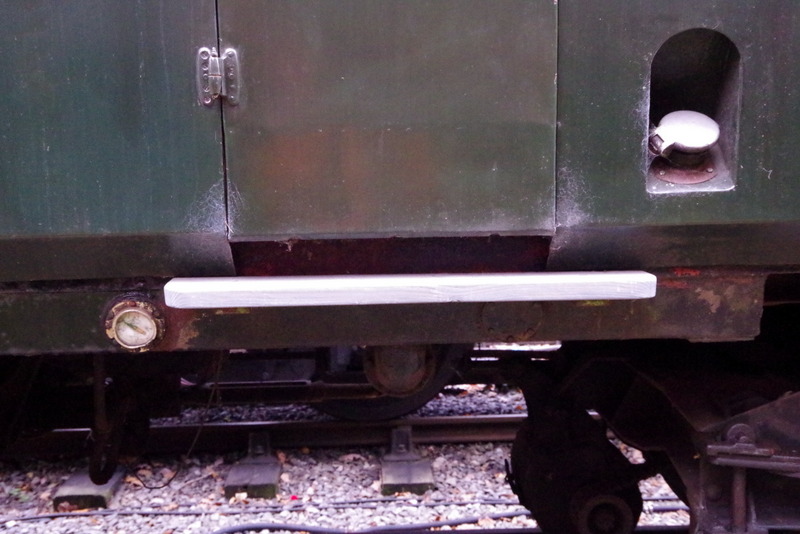
Inside the unit the first of the wall panels was cut for the middle compartment on the driver's side, and fitted. A panel for the wall between two of the windows was then cut and fitted...
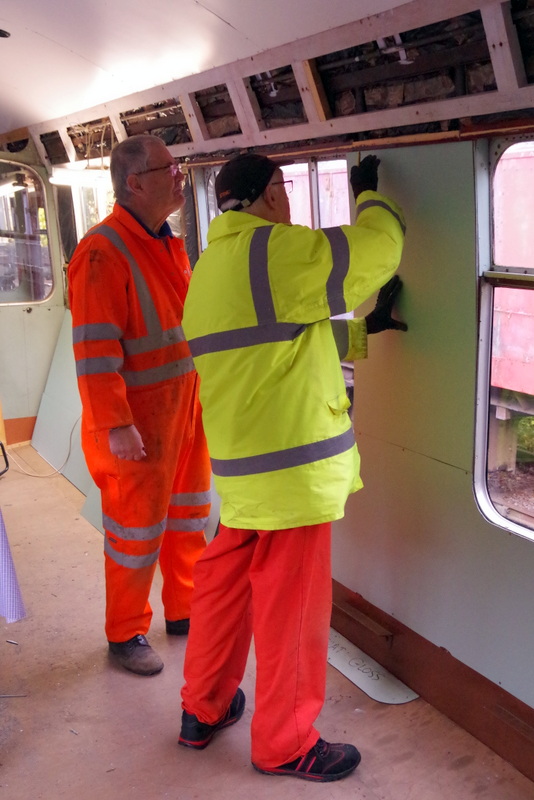
The strip of panel that fits on the vestibule wall of the first vestibule which was badly damaged was replaced. This involved the removal of the aluminium trim around the glass, so that the panel could be removed and the new one fitted. The following picture shows one person fitting the first panel with another in the background removing the screws that hold the aluminium frame in place...

The following picture shows the new one fitted with the damaged one next to it...

Much work has taken place in the trailer car but not without some trials and tribulations as is often the case in the restoration world. One such thing was the temporary disappearance of a delivery of plywood that caused a delay to the job that needed it, and another was the need to remove a wall panel in the first class section in order to determine the position of the securing metalwork and then work out the best way of fastening the seats - the piece of paper detailing that information having, unfortunately, been lost in the mists of time. After the plywood eventually turned up a start was made on raising the floor level.
Thanks to Allen Chatwood, Mike Martin and Martin Plumb for supplying the pictures.